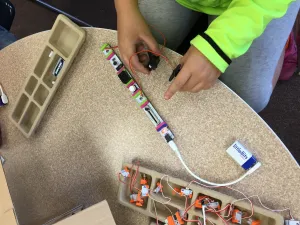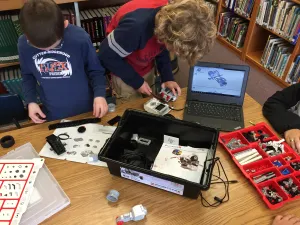After-school clubs offer both students and teachers the freedom to explore alternative approaches to learning.
For more than six hours each day, we aim to seize every teachable moment. Our schedules, carefully crafted and refined, often resemble a flight schedule at a busy airport: whole-class math lessons here, reading groups there, and one-on-one conferencing/counseling/cheerleading sessions squeezed in everywhere else. But we all know learning isn't confined to the school day. Extracurricular activities, from soccer to chess club, have been around as long as school itself. When I was young, few after-school activities appealed to me, so hosting an after-school club as a teacher didn't occur to me until a few years ago when I began to look at after-school learning through a new lens. Having started two after-school clubs in the past three years, I now realize I can create rich learning opportunities that would have appealed to me when I was a student, and simultaneously appeal to the teacher I am now.
Where Everything Is Awesome
As a life-long fan of all things Lego, when I began to design my first classroom, I knew a box of those inspiring multicolored bricks would be part of my choice-time repertoire. The only complaint my students had about Lego time was that they wanted more! This realization, along with my appreciation for the creative and cooperative nature of Lego play, inspired my first after-school club -- a monthly Lego Club. Since I work at a Pre-K through second grade school, a main goal for creating this club was to offer an age-appropriate, enriching, and fun environment encouraging pro-social interaction.

This year I began to think about how this approach to high-interest, student-oriented after-school learning could be scaled up to the third- through sixth-grade school in our district. While a second Lego Club did occur to me, I wanted to expand the learning -- for both the students and myself. My own interest in the Maker Movement offered the perfect inspiration, and so with financial help from both our PTA and DonorsChoose, as well as some creative dumpster-diving, the Maker Lab was born.
A Space for Making Makers
Similar to the Lego Club, the Maker Lab aims to encourage collaboration and creativity in a student-focused setting. Since making can encompass projects appealing to a variety of ages, skill levels, and interests, an after-school club focused on making works beautifully in a school focused on project-based learning.
As you can imagine, an elementary-school maker club is bound to look different than its middle or high school counterpart. Due to age and lack of life experience and skills, available tools are different and the need for adult support is slightly greater. So far, I have been impressed with the interest and enthusiasm of the students to tinker and begin research as they consider self-selected topics. For those still unsure what form their making will take, we have an extensive collection of littleBits, modular electronics prototyping kits, and a Lego robotics set to scaffold the making

The long-term goal for my role at Maker Lab is to transition from being the teacher to serving primarily as research assistant, lab technician, and grant writer based on the needs and interests of the students (while still sharing my geeky interests to serve as inspiration). I hope to become increasingly obsolete as students begin to share knowledge and skills with one another. At the end of next school year, I’ll encourage students to share their creative, high- (and low-) tech tinkering with the school community through a mini-maker faire, which will hopefully inspire others to give making a try.
Without a doubt, leading after-school clubs takes time from my already busy after-school schedule. While the goals of after-school learning are different from those we set during the school day, they are no less valuable. After-school clubs offer both students and teachers the freedom to explore alternative approaches to learning. For students, after-school clubs offer more agency over their learning and how that learning happens. For teachers, creating and supervising extracurricular learning can be a source of inspiration and serve as a sandbox for new approaches to teaching (I’m looking at you, flipped classroom and UDL!). Ultimately, to see students, some of whom do not consider school a place of success, engaging with peers and adults in a supportive environment is what school should be all about -- learning. Even if that learning has to wait until school is out.








